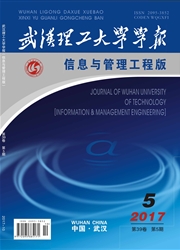

 中文摘要:
中文摘要:
应用扩展元胞自动机(cellular automata,CA)模型,研究灾害发生时人员在地下建筑的动态疏散过程。以Agent仿真技术和CA理论为基础,扩展元胞自动机的邻域范围,引入个体异质行为与疏散过程中人员的不同状态,对地下建筑的人员疏散进行建模与仿真。仿真结果表明,在扩展的摩尔邻域下,个体的活跃程度、信息的接受能力与传递能力对地质灾害发生时地下建筑人员的疏散效率有显著影响。当个体的活跃程度、信息接受能力与传递能力适中时,有最大疏散效率,所需的疏散时间最短。
 英文摘要:
英文摘要:
The dynamic evacuation process in the underground building when hazard occurred was discussed by applying the CA model. In order to describe the whole evacuation process exactly, the Agent Simulation and CA theory were introduced. They extended the neighborhood of CA model. The individuals heterogeneous behaviors and different situations in the process of evacuation were introduced to construct and simulate the evacuation model in the underground building. The results show that both the mobility and agent's ability of spreading and receiving information are impacted on evacuation efficiency in the underground building when hazard occurs. When the mobility and agent's ability of spreading and receiving information are moderated, there are in great evacuation efficiency and the less evacuation time in need.
 同期刊论文项目
同期刊论文项目
 同项目期刊论文
同项目期刊论文
 期刊信息
期刊信息
